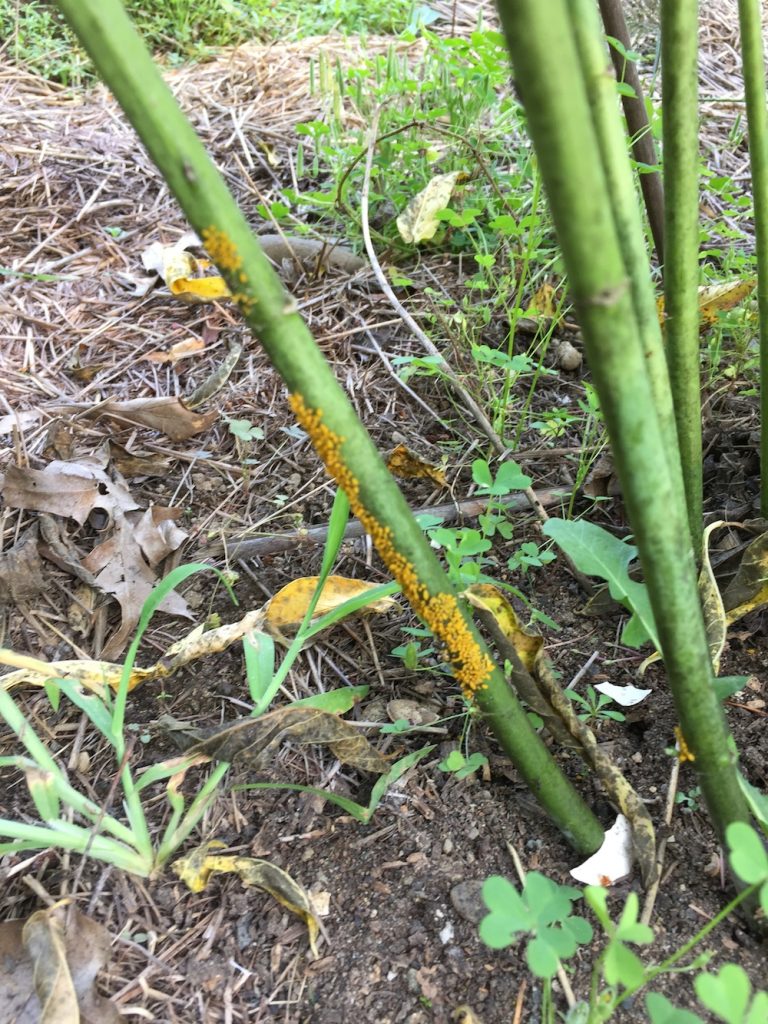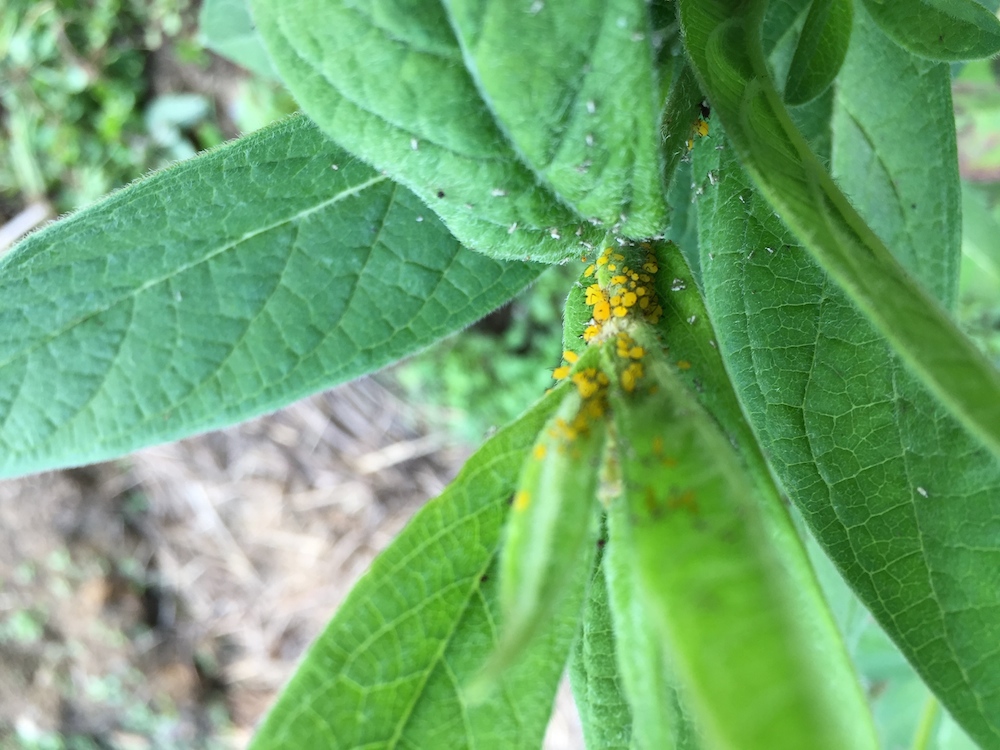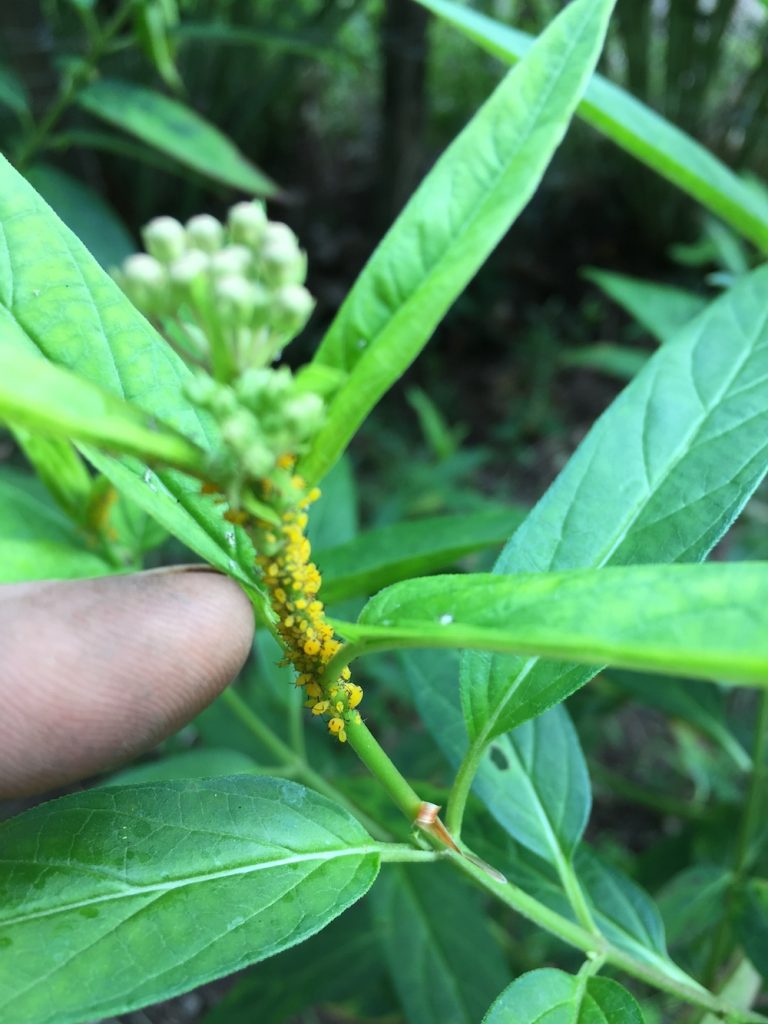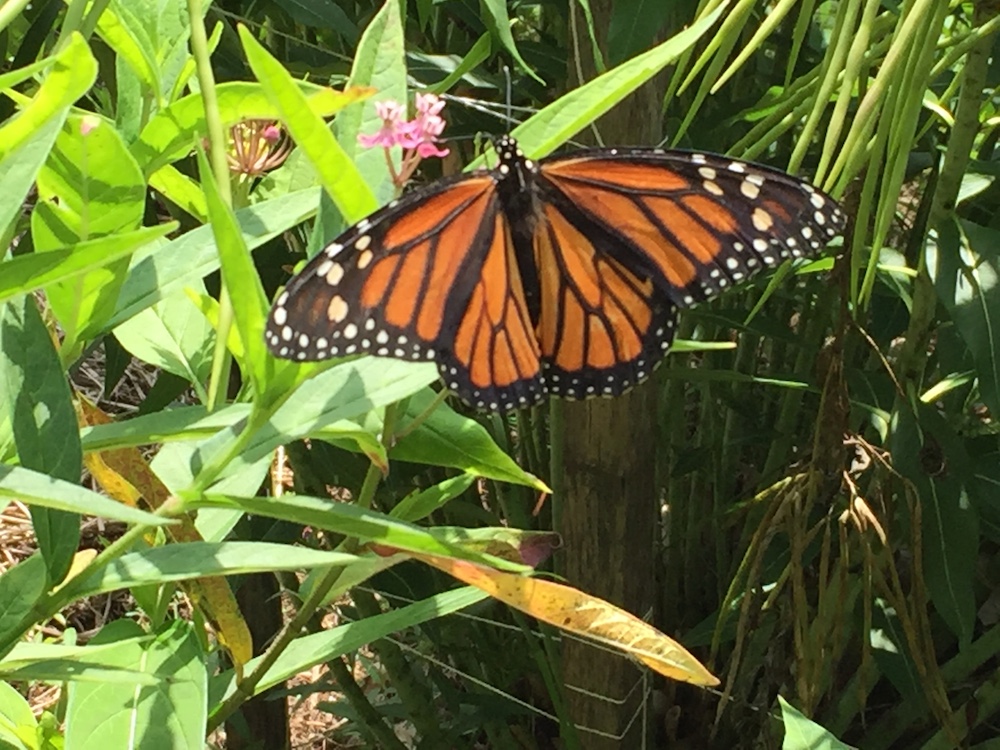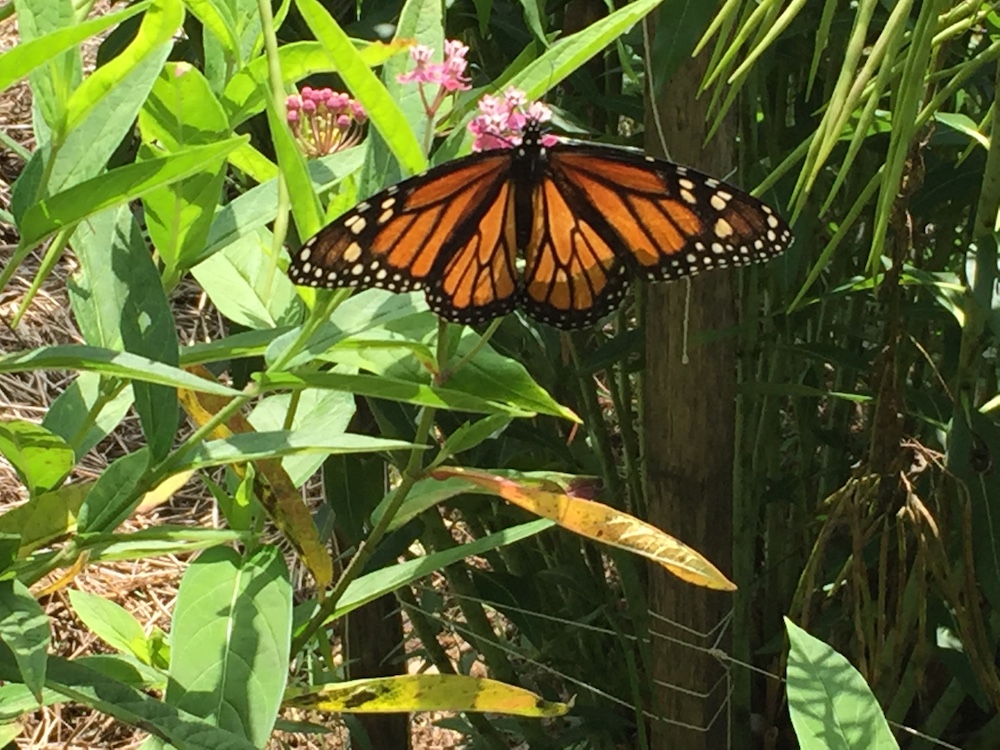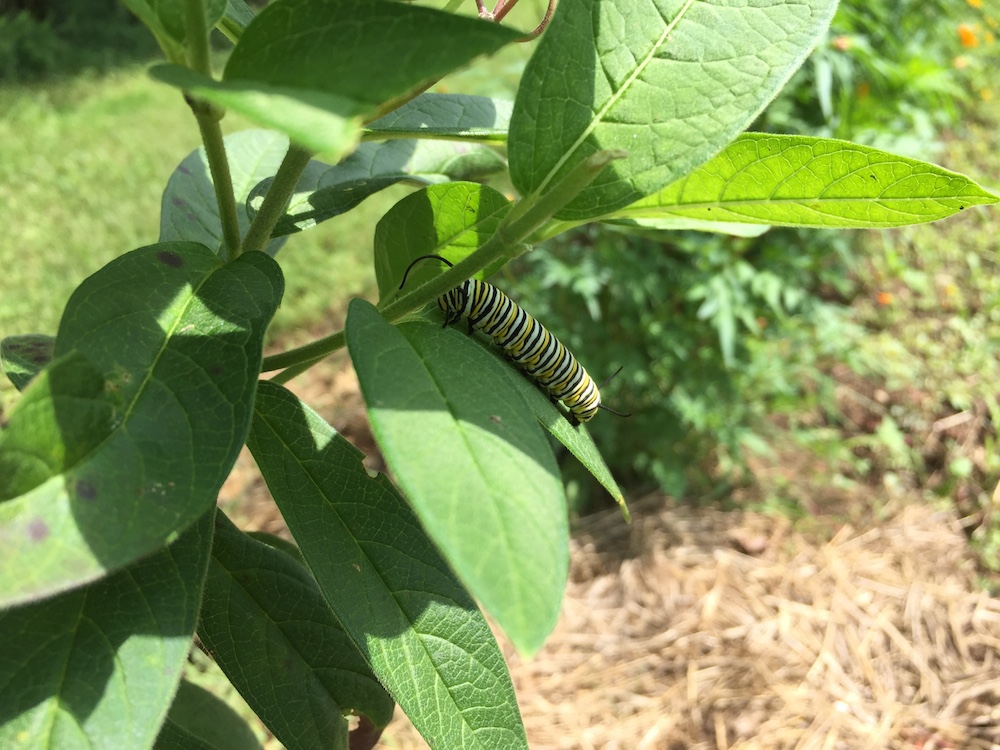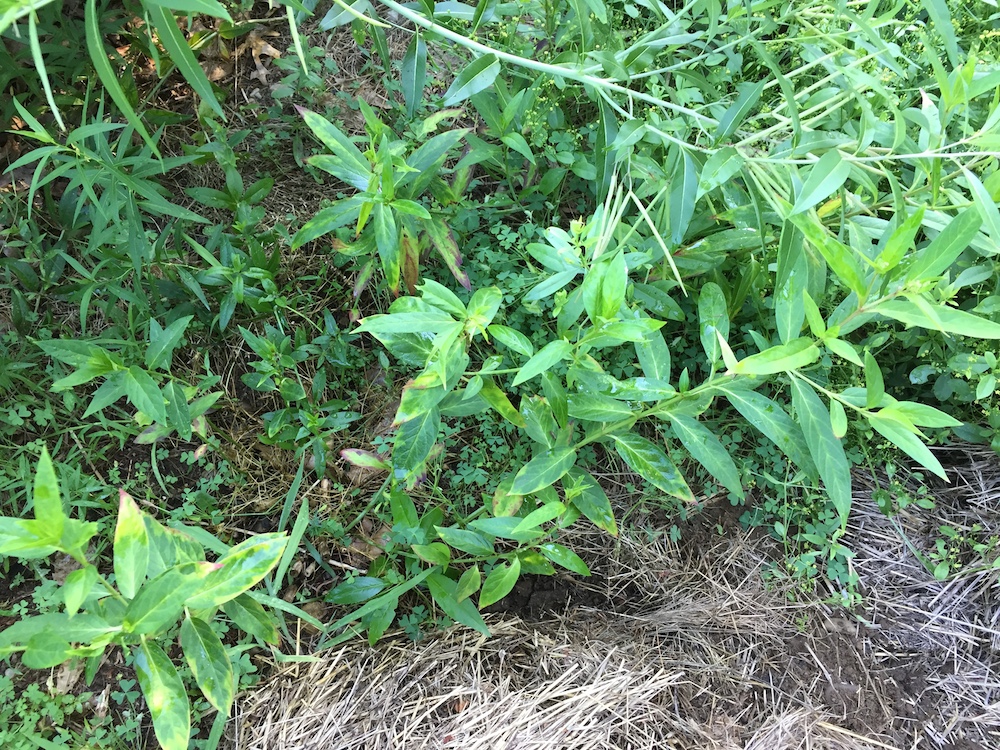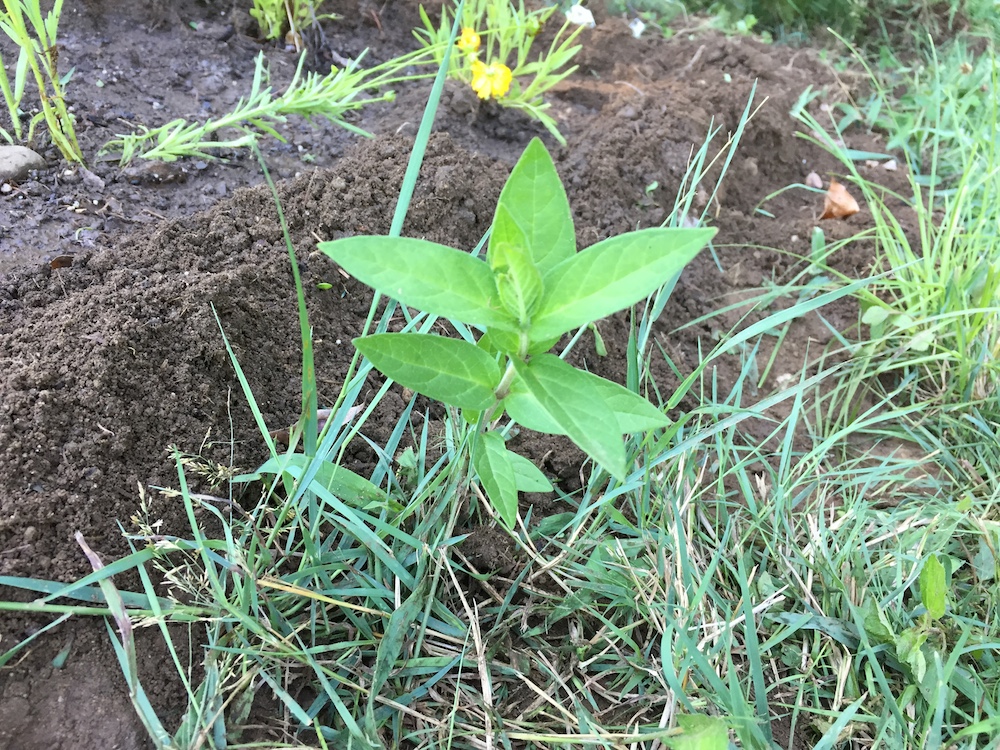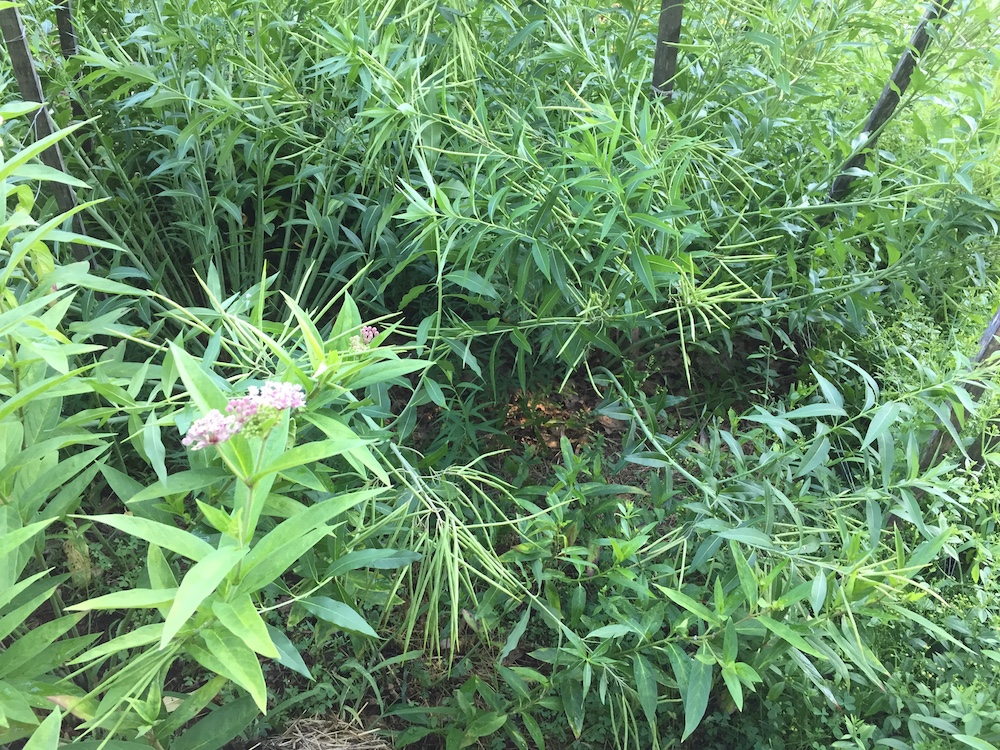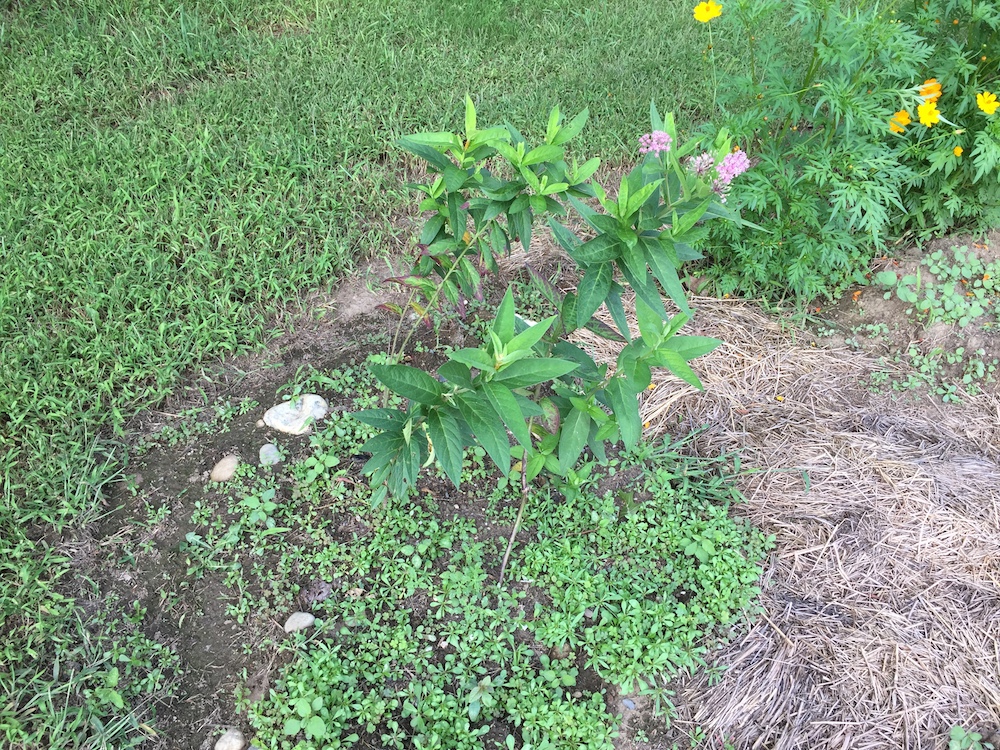Ever since I planted my swamp milkweed (Asclepias incarnata) in 2014, it has suffered from yellow aphids. I thought I had mentioned this problem in an earlier post. However, when I went back to look for it, I found that comment was buried in a lot of other information about praying mantises and pesky garden bugs. So, here’s a post dedicated to my swamp milkweed and how it’s doing this summer.
There are many dimensions to the life of any plant, so I divided this up into sub-categories.
Yellow Aphids
I did a better job this year checking the plants for aphids. For most of the summer I didn’t notice any, and the plants seemed happy. I had been worried they wouldn’t come back because some of the plants were very badly affected by yellow aphids last summer. They had sad withered stalks and gave up the ghost early in the season. Last week, I noticed aphids for the first time, and promptly washed them off with water. I am used to squishing bugs, and tiny ones like aphids don’t gross me out too much. So, I employed a “rinse and squish” method of physical removal.
Here are yellow aphids on the base of the stalks, close to the ground:
The resolution isn’t that great, but you get the idea. That long swath of yellow stuff is tiny sap-sucking bugs.
Here are two images of yellow aphids on younger plants, up near the top of the plant on the tender growing tips:
The resolution on these is good enough to see their little black legs and “cornicles”. That’s a word I just learned. I found awesome information and graphics about what an aphid cornicle does on The Bug Chicks page. This page from The Natural History of Orange County, California has some interesting information about the oleander or yellow aphid lifecycle. This page from the Entomology and Nematology Dept. at the University of Florida is also informative.
I will check back for repeated rinses and squishings as we head into late summer and fall around here.
Monarch Food Source
When I was looking up ways to deal with aphids last summer, I found several websites that listed swamp milkweed as one of the food sources of monarch butterflies and one of the host plants for caterpillars. I hadn’t seen monarch butterflies visit my plants, nor any caterpillars eating them. So, I continued to categorize swamp milkweed as “awesome fiber-bearing plant”, and prioritized that potential over its “useful-to-monarchs” potential. I tend to be a “gotta see it to believe it” person; if something I read contradicts my own experience, I let it stew until I get more evidence. Please refer to this post to understand the picture I have in my mind when I think about swamp milkweed’s sparkling fiberous beauty.
This summer I have observed and documented: 1) monarch butterflies feeding on swamp milkweed flowers; 2) what looks like a monarch butterfly depositing eggs on a swamp milkweed leaf; *and* 3) monarch caterpillars eating the leaves!
Butterflies are a beautiful sight, so I took waaay too many photos (and videos, which I will spare you):
In this image, I believe the butterfly is depositing eggs on a swamp milkweed leaf:
And here, on those younger plants I mentioned, are two monarch caterpillars:
They seem pretty plump, so I hope they are finding the food to their liking. Gotta see it to believe it!
Transplanting Swamp Milkweed Babies
Not only were the swamp milkweed plants happy this summer, they made babies! Babies are always exciting, but they also raise questions and concerns about the best ways to care for them and ensure that they survive and thrive. A couple small swamp milkweed plants popped up close to the parent plants, amidst the ambitiously spreading Amsonia tabernaemontana.
Another emerged on the opposite side of the garden amidst the ambitiously spreading madder. And yet another managed to be growing at the very edge of the lawn around the garden plot. What to do?
The amsonia next to the swamp milkweed has increased and multiplied very successfully. While I am happy for its success, it is cramping the style of the comparatively shorter Asclepias incarnata. The amsonia is the sprawling plant with tons of long seed pods (it blooms first thing in the spring):
So, I wanted to get those swamp milkweed babies out of there and into a more spacious environment.
I wasn’t sure if mid-summer transplant operation was wise. The Nasami folks advised against it. I also consulted this article on the Monarch Butterfly Garden website, which has some useful information about transplanting swamp milkweed.
Both sources recommended transplanting asclepias species when the upper parts are dormant, either in the fall or spring. In addition to my aforementioned “gotta see it to believe it” attitude, I figured I would add “you never know until you try” and take my chances. I tried to move the babies, and it worked!
I dug up and moved a few of the young plants to a new spot with plenty of compost and water. The one with the twisted stalk had been managing to survive among the grasping madder. I figure it’s at least a year old, so it must be a very determined plant!
I think it worked to transplant these in July because they were still pretty small and the roots were not extensive. I had been prepared for the shock to cause them to go dormant, or at least to skip flowering this season. But no!
Not only did they thrive, these are the plants where the monarch caterpillars are currently living.

